Index
Page 2 of 4
Chassis, Cooling and Everyday Use
The Zbox AD02 measures 188 x 188 x 44mm, basically it is about as wide as a standard ATX chassis, or a tad bigger than an external 3.5-inch HDD enclosure. Pretty impressive for a full blown PC, although there are a few smaller nettops on the market, but all of them are Atom based and therefore really not in the same class, since they lack quite a few features native to Brazos.
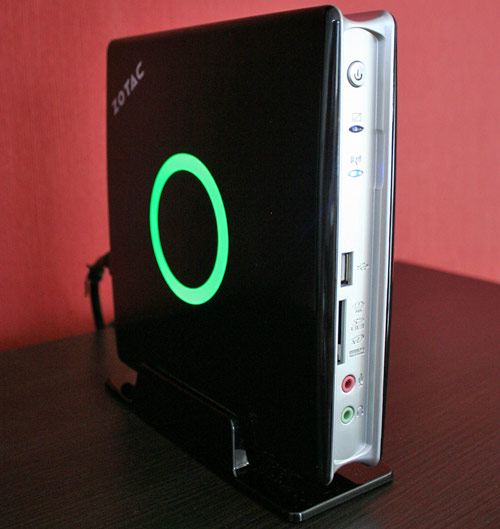
The chassis feels quite sturdy and we like the design, too. Zotac fashioned the sides from high gloss plastic, or piano black if you like, so the Zbox should look great next to your TV. A touch of silver plastic in the middle offers some contrast, while some fluorescent lighting arranged behind a semi-translucent circle livens up the whole affair with a friendly green glow. Should you find the light show distracting while watching Hollywood’s latest high budget debacle, you can switch it off in BIOS settings. The vents on top of the chassis could be used by FEMA to house dislocated bees fleeing the latest calamity caused by climate change, or God if you happen not to believe in climate change.
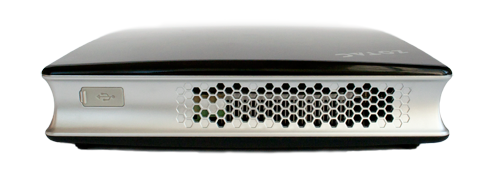
Speaking of climate change and those poor polar bears, power efficiency is one of the main advantages of nettops over regular desktops. Nettops use less than 20W while idling, whereas average desktops use between 40W and 55W with integrated graphics. With mid-range discrete graphics, the figure can go up to 70W or even 90W depending on the system. Even if you’re not into the whole eco-mental guilt thing, lower power consumption can save you quite a bit of cash in the long run. If you run your system 24/7, choosing a nettop could save you about €70 a year using average power prices in Europe as a reference (15 euro cents). If you happen to live in countries with higher electricity costs, such as Germany, Austria, Italy or Denmark, the savings are even higher and a nettop could practically pay for itself during its brief lifecycle.
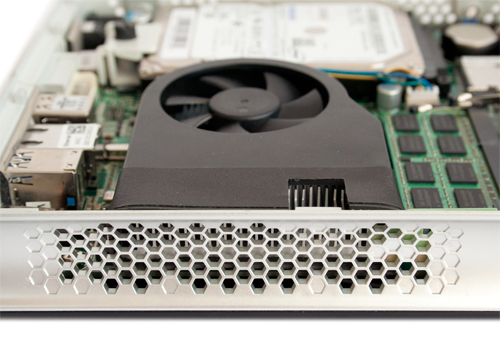
An added benefit of power efficient computing is silence. The Zbox features a passive, external DC adapter and it’s practically silent, unless you are running some demanding applications. Even then, the small blower fan whisks the heat away while remaining barely audible. Of course, we should expect no less from Zotac, or any other graphics card vendor for that matter. AIB guys are used to cooling down dual-GPU beasts that use more power than an average North Korean town, hence designing a cooling system for an 18W APU is probably something their janitor could pull off in-between mopping the floor and watering the orchids.
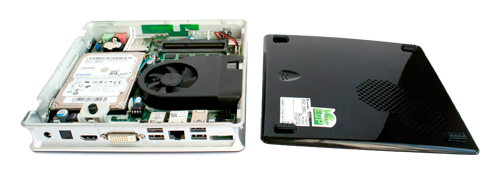
Accessing the insides is a straightforward affair and all one has to do is undo a couple of screws to reveal the tiny interior. It’s not as cramped as on a notebook, but it’s not far off, either. Still there is plenty of room for cooling and upgrades are a walk in the park.

The Plus version ships with a single 2GB SO-DIMM module and a 250GB 5400rpm hard drive. Adding an extra memory module takes mere seconds and tinkering with the hard drive is easy, since it’s kept in place by a single screw.
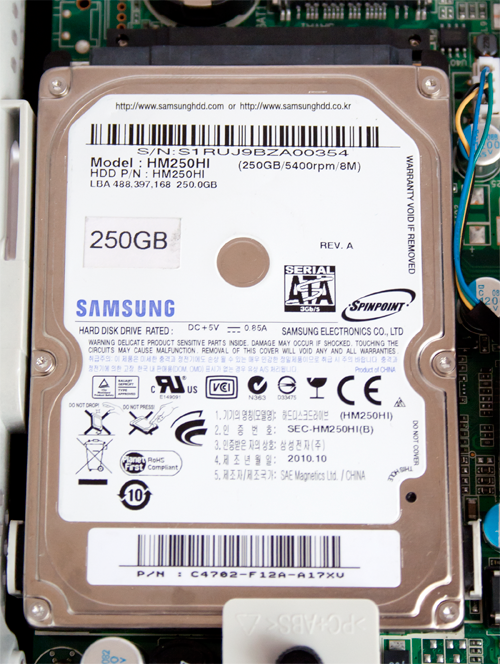
Of course, users interested the barebone variant will probably go for a 7200rpm drive, or even a hybrid drive. SSDs are still too pricey and they don’t make much sense on what is supposed to be an affordable, content-oriented PC. However, SATA 6Gbps support is onboard, so it’s possible to upgrade the Zbox with some lightning fast solid state storage, especially if it fell of a truck in Peckham.
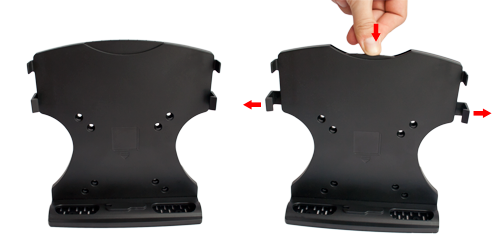
Zotac ships the Zbox with a simple yet sturdy vertical stand and a VESA mount. The VESA mount is very clever as you can see on our photos, but some caution is advised. In case you plan on using it on your TV, be sure to double-check the dimensions. Due to increasing appetites for screen acreage, the VESA standard was extended several times over the past few years, so don’t expect to mount the Zbox on the back of a 40+ inch TV straight out of the box. What’s more, most ultrathin monitors with LED backlighting feature no VESA mounts at all. So, Zotac’s VESA mount is great, but it has rather limited application thanks to market trends.
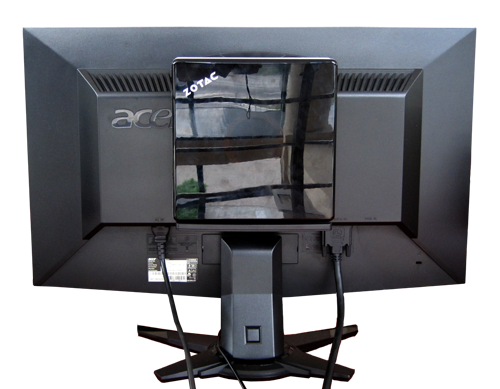
On the bright side, the Zbox is stylish enough to keep next to your TV. WiFi reception is slightly better when you keep it upright, and so is cooling thanks to natural convection. Call us old-fashioned, but horizontal works best for us. (Uhm, we are still talking about a PC, right? Ed.)
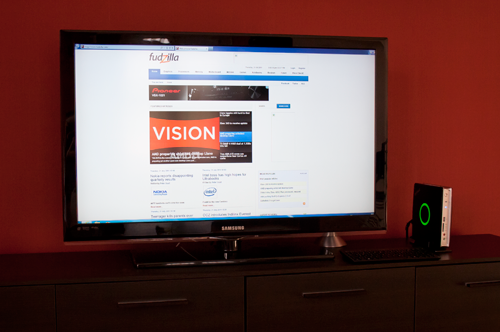
As you can see, the Zbox is packed with a host of connectors on all sides.
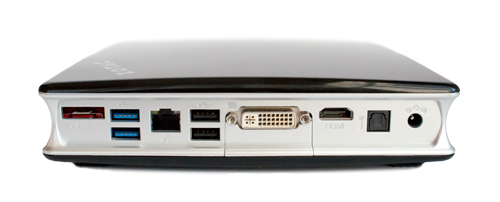
Four USB ports, two of which are USB 3.0 compliant, eSATA, HDMI, DVI, LAN and power connectors are at the back.
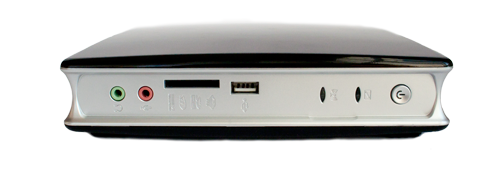
The front offers an easily accessible USB port, card reader and audio connectors, along with status LEDs and the power button. The left and right sides, or top and bottom sides if you use the vertical mount, are reserved for cooling, but there's an USB port behind a rubber flap on the right/top side.
With a total of six USBs, including two USB 3.0 ports and eSATA, the tiny Zbox makes upgrades and expansion a breeze. High speed standards like USB 3.0 or eSATA are a must in media-oriented devices nowadays and in this respect Brazos beats any Atom on the market.



